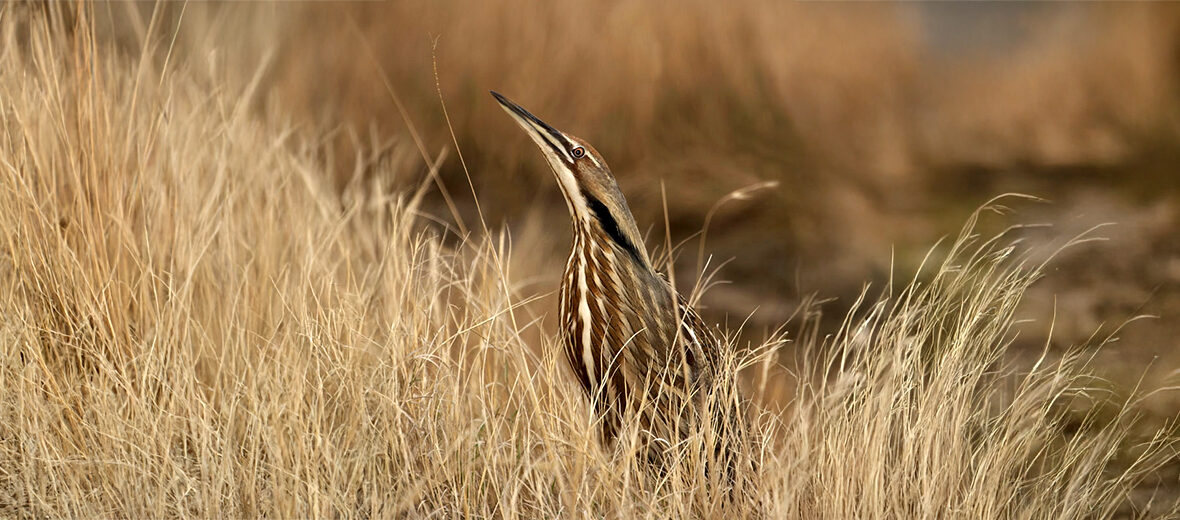
The American bittern is a migrating, wading species of bird from the heron family. They are found throughout Canada, United States, Mexico, and Central America. With a wide distribution and an abundant population, these birds are listed as Least Concern by the IUCN. However, they do face the threats of habitat loss and destruction at the hands of residential and commercial developments; water pollution and land pollution; and possibly climate change, that can cause flooding and severe storms. Their populations are listed as decreasing.
First the Stats…
Scientific name: Botaurus lentiginosus
Weight: Up to 2.4 lbs.
Length: Up to 33 inches
Wingspan: Up to 45 inches
Lifespan: Up to 8.4 years
Now on to the Facts!
1.) These birds are solitary and only come together to mate or to migrate.
2.) They were first described in 1813 by English clergyman Thomas Rackett from a transient individual he examined in Dorset, England.
3.) No extant subspecies are currently accepted.
4.) That being said, fossils found in the Ichetucknee River in Florida, which were originally described as a new form of heron (Palaeophoyx columbiana) were later recognized to be a smaller, prehistoric subspecies of the American bittern which lived during the Late Pleistocene epoch.
5.) They are nocturnal (active at night), with the majority of their activity being around dusk.
But wait, there’s more on the American bittern!
6.) Males produce a loud, booming call that sounds like a congested pump and which has been rendered as “oong, kach, oonk”. While issuing this sound, their head is thrown convulsively upward and then forward, and the sound is repeated up to 7 times.
7.) Fish, frogs, salamanders, lizards, snakes, mice, moles, voles, crustaceans, and insects are all readily consumed.
Did you know…?
Numerous folk names have been given for their distinctive call. In his book on the common names of American birds, Ernest Choate lists “bog bumper” and “stake driver”. Other vernaculars include: “bog bull”, “bog thumper”, “mire drum”, “thunder pumper”, and “water belcher”.
8.) The female will build the nest, while the male guards it.
9.) Nests are built approximately 6 inches above the water line and are made into a rough platform of dead stalks and rushes, often times with a few twigs thrown in, and then lined with bits of coarse grass for good measure.
10.) Females lay up to 6 eggs that hatch in 29 days.
But wait, there’s still more on the American bittern!
11.) Chicks leave the nest in up to 2 weeks and are fully fledged in up to 7 weeks.
12.) American bitterns are protected under the United States Migratory Bird Treaty Act of 1918.
13.) They are also protected under the Canadian Migratory Birds Convention Act of 1994 to which both Canada and the United States are signatories.
Now a Short American Bittern Video!
Be sure to share & comment below! Also, check out the Critter Science YouTube channel. Videos added regularly!

Want to suggest a critter for me to write about? Let me know here.
Some source material acquired from: Wikipedia & IUCN
Photo credit: Jerry Segraves



